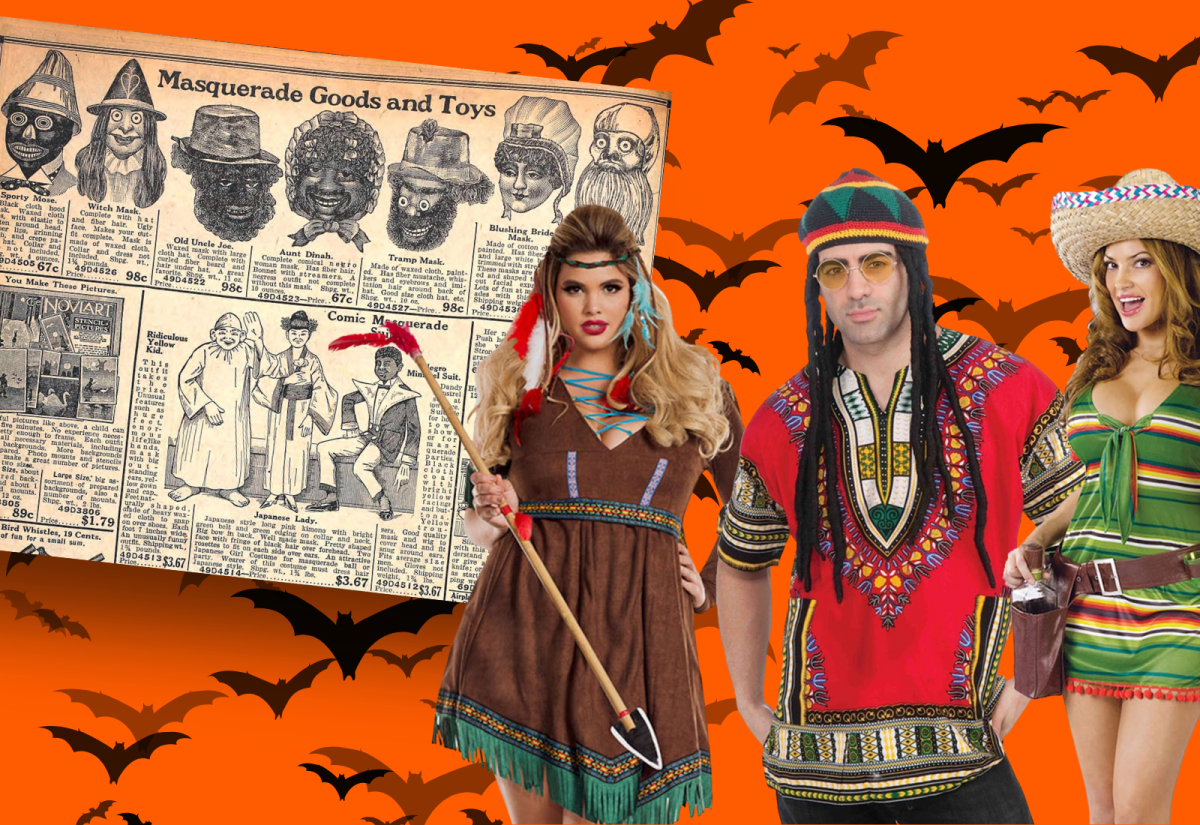When walking through the local Spirit Halloween or costume shop, almost no one bats an eye when looking through the costumes on display, wondering which one they should pick to wear for that year’s Halloween costume.
Halloween costumes, as celebrated in the United States (U.S.), have been a cherished tradition of the holiday, having roots in ancient Celtic traditions of dressing as ghosts to collect treats from wandering spirits and avoid being possessed. This was among numerous other traditions and rituals across the world, especially in Ireland, before following Irish immigrants to the U.S. and spreading further Today, costumes are worn every year and characterize depictions of many items, characters and more.
What many people fail to notice in Halloween costumes are the many traces of their harmful and insulting pasts. For years, costumes were all about establishing white supremacy, which was accomplished by dressing in demeaning costumes involving methods of mocking races by using inappropriate makeup and garb called Blackface, Redface, Brownface and Yellowface. These depictions mocked its victims but were seen as funny to white audiences.
Recreational Halloween costumes in the U.S. did not always intend to insult or objectify different races. In the Victorian era, costumes were worn during Halloween parties, more-so by adults than children. These parties had more romantic implications than they often do today, some events involving divination games to foresee future marriage partners . During this specific period, Halloween costumes were still novelties and not often worn.
In the early 1900s, Halloween costumes changed as they were often inspired by creepy motifs, such as witches, bats and ghoulish figures. In the early 20th century, young vandals began pulling pranks around Halloween time and people began targeting the holiday towards these children by developing trick-or-treating and costume parties. The adults and children who participated in the events began making their own costumes out of crepe paper, and masks out of paper mache and fabric.
Although Halloween costumes held innocent intentions, the holiday was and is sometimes still celebrated with racist and colonial tones. During the 20th century, many white people made fun of people of color through their Halloween costumes. Minstrel shows, a form of theater that comically portrays African Americans using Blackface makeup and racial stereotypes, were popular at the time, which further influenced the usage of Blackface as a Halloween costume.
Another popular yet offensive depiction is Redface, which roots back to the Boston Tea Party in 1773 as protesters dressed up as members of the Mohawk tribe. Currently, Redface continues to be popular due to white supremacy and colonialism. People still dress as Native American-inspired figures, most of them labeled on the costume package as “Indian.” Though white people may not realize it, these costumes are extremely demeaning to the indigenous community.
“Because it is so inaccurate, it almost feels like a joke,” Sheila Chalakee, a Native American woman featured in a YouTube video discussing modern Redface costumes by the channel “As/Is,” said. “[The costume feels like] someone is making fun of me and all the things that my people fought and died to hold on to.”
Many would like to believe that in today’s society, offensive costumes and caricatures would no longer exist; however, they are still very common without people even realizing it. Back in the 1930s and before, ethnic costumes were not seen as an issue amongst white people as racism was mainstream. Today, white audiences still dress in offensive costumes every year, such as ancient Egyptian, Asian, Latino, Hispanic and Native American “Indian” costumes. There are numerous other types of offensive and racist costumes, most of which are much more than just a joke to those who are a part of the targeted communities.
Because of racial and colonial influences on Halloween costumes, offensive ethnic apparel has been mainstream and worn for centuries. They are more than just old history, as they are still widespread today as staples of the holiday, which is nowadays meant to celebrate the season and diverse costumes mainly depicting fun characters and Halloween motifs. Moving forward in the spooky season, it is important to remember the history and implications of misrepresentative Halloween costumes when walking through the store before innocently picking out a costume that may have derogatory connotations and nature.



